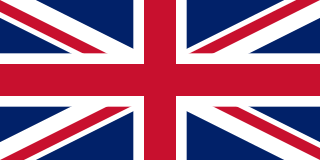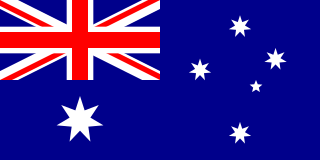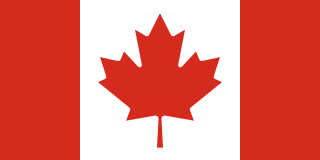Medal table
| Rank | Nation | Gold | Silver | Bronze | Total |
|---|---|---|---|---|---|
| 1 | 8 | 8 | 7 | 23 | |
| 2 | 0 | 0 | 1 | 1 | |
| Totals (2 entries) | 8 | 8 | 8 | 24 | |
Ice sledge speed racing at the 1994 Winter Paralympics consisted of eight events, four for men and four for women.
Athletes from seven countries (Norway, Austria, Canada, Estonia, Iceland, Japan and the Netherlands) took part and Norway pulled off an almost complete clean sweep of the medals, winning all eight gold medals, all eight silver, and seven of the eight bronze - with the sole other going to Austria. [1]
| Rank | Nation | Gold | Silver | Bronze | Total |
|---|---|---|---|---|---|
| 1 | 8 | 8 | 7 | 23 | |
| 2 | 0 | 0 | 1 | 1 | |
| Totals (2 entries) | 8 | 8 | 8 | 24 | |
| Event | Gold | Silver | Bronze |
|---|---|---|---|
| Men's 100 m LW10-11 | Lars Andresen | Knut Lundstrøm | Felix Karl |
| Men's 500 m LW10-11 | Lars Andresen | Atle Haglund | Knut Lundstrøm |
| Men's 1000 m LW10-11 | Atle Haglund | Knut Lundstrøm | Lars Andresen |
| Men's 1500 m LW10-11 | Atle Haglund | Knut Lundstrøm | Lars Andresen |
| Event | Gold | Silver | Bronze |
|---|---|---|---|
| Women's 100 m LW10-11 | Britt Mjaasund Øyen | Ragnhild Myklebust | Evy Gundersen |
| Women's 500 m LW10-11 | Britt Mjaasund Øyen | Ragnhild Myklebust | Kirsti Hoøen |
| Women's 700 m LW10-11 | Ragnhild Myklebust | Kirsti Hoøen | Britt Mjaasund Øyen |
| Women's 1000 m LW10-11 | Kirsti Hoøen | Britt Mjaasund Øyen | Ragnhild Myklebust |

The 1994 Winter Olympics, officially known as the XVII Olympic Winter Games and commonly known as Lillehammer '94, were an international winter multi-sport event held from 12 to 27 February 1994 in and around Lillehammer, Norway. Having lost the bid for the 1992 Winter Olympics to Albertville in France, Lillehammer was awarded the 1994 Winter Games on 15 September 1988, two days before the 1988 Summer Olympics opening ceremonies at the 94th IOC Session in Seoul, South Korea. Due to the calendar changes made in 1986, this was the only time that the Winter Olympics took place two years after the previous Winter Games, and the first to be held in a different year from the Summer Olympics. This was also the first Winter Olympics to be held during the Commonwealth Games and FIFA World Cup year. This was the second Olympic Games of any type hosted in Norway — the first being the 1952 Winter Olympics in Oslo — and the fourth Olympics overall to be held in a Nordic country, after the 1912 Summer Olympics in Stockholm, Sweden, and the 1952 Summer Olympics in Helsinki, Finland. Lillehammer is the northernmost city ever to host the Olympic Games.

The 1994 Winter Paralympics, the sixth Paralympic Winter Games, were held in Lillehammer, Norway, from 10 to 19 March 1994.The Lillehammer Paralympics were the second time that the Games were held in Norway, after the 1980 Winter Paralympics in Geilo. 471 athletes from 31 countries participated, with Norway claiming the most gold medals ahead of Germany. This was the first Paralympics which the International Paralympic Committee had 100% involvement and responsibility and the first Games with their own logo.

The 1998 Winter Paralympics, the seventh Paralympic Winter Games, were held alongside the Winter Olympics in Nagano, Nagano Prefecture, Japan from 5 to 14 March 1998. They were the first Paralympic Winter Games to be held in Asia. 571 athletes competed in Nagano; as 2022 it remains the highest number of athletes competing at any Winter Paralympics.

The 1980 Winter Paralympic Games, the second Winter Paralympics, were held from 1 to 7 February 1980 in Geilo, Norway. Eighteen countries took part with 299 athletes. A demonstration event was held in sledge downhill racing. All classes of athletes with locomotor disabilities were able to participate. Organized by the International Stoke Mandeville Games Federation (ISMGF) and the International Sports Federation of the Disabled (ISOD).

The 1984 Winter Paralympic Games were the third Winter Paralympics. They were held from 14 to 20 January 1984 in Innsbruck, Austria. They were the first Winter Games organized by the International Co-ordinating Committee (ICC), which was formed on 15 March 1982, in Leysin, Switzerland. These Games were accessible for all athletes with cerebral palsy. Three sports were contested: alpine skiing, cross-country skiing, and ice sledge speed racing. The most successful athlete was German alpine skier Reinhild Moeller, who won 3 gold medals and 1 silver medal. The Games, then known as the 3rd World Winter Games for the Disabled, were fully sanctioned by the International Olympic Committee (IOC).

The 1988 Winter Paralympic Games were the fourth Winter Paralympics, held again in Innsbruck, Austria. These were the last Paralympics to be held in a separate location from the Olympics. Beginning in 1992, the Olympics and the Paralympics were held in the same city or in an adjacent city. These Paralympics were not held at the same Olympic venue in Calgary, Canada, because of financial and recruiting difficulties. A total of 377 athletes from 22 countries took part. The USSR competed for the first and only time. Sit-skiing was introduced as another event in both the Alpine and Nordic skiing competitions. Other sports were biathlon and ice sledge speed racing. Ice sledge speed racer Knut Lundstroem from Norway was the most successful athlete, winning four gold medals in the 100m, 500m, 1000m and 1500m events.

Vikingskipet, officially known as Hamar Olympic Hall, is an indoor multi-use sport and event venue in Hamar, Norway. It was built as the speed skating rink for the 1994 Winter Olympics, and has since also hosted events and tournaments in ice speedway, motorcycle speedway, rally, association football, bandy, ice sledge speed racing, flying disc and track cycling. The arena is also used for concerts, trade fair and the annual computer party The Gathering. It is the home arena of Hamar IL bandy team. The venue is owned by Hamar Municipality, and along with Hamar Olympic Amphitheatre is run by the municipal Hamar Olympiske Anlegg. Vikingskipet has a capacity for 10,600 spectators during sporting events and 20,000 during concerts.

Eidsiva Arena, also known as Kristins Hall, is an arena located at Stampesletta in Lillehammer, Norway. It consists of an ice rink, a combined handball and floorball court, and a curling rink. The venue, owned and operated by the Lillehammer Municipality, opened in 1988 and cost 65 million Norwegian krone (NOK) to build. One of the motivations for its construction was to help Lillehammer's bid to be selected as the host of the 1994 Winter Olympics. The ice rink has a capacity for 3,194 spectators and is the home rink of GET-ligaen hockey club Lillehammer IK. Eidsiva Arena is located next to the larger Håkons Hall, which opened in 1993. During the 1994 Winter Olympics, Kristins Hall was a training rink, and subsequently hosted the ice sledge hockey tournament at the 1994 Winter Paralympics. The venue also co-hosted Group B of the 1989 World Ice Hockey Championships.

Estonia participated in The VI. Winter Paralympic Games in Lillehammer, Norway. It won 1 bronze medal.
Ragnhild Myklebust, PLY is a Norwegian Nordic skier and multiple gold medal winner at the Paralympic Games. To date, she holds the record for the most ever medals won at the Winter Paralympics, having won 27 medals, of which 22 were gold.

The United Kingdom of Great Britain and Northern Ireland competed as Great Britain at the 1984 Winter Paralympics in Innsbruck, Austria. Britain's twenty-two athletes competed in all three sports: cross-country skiing, alpine skiing and ice sledge speed racing. For the first time in its Winter Paralympic history, Britain won medals, albeit no gold; British athletes obtained four silver medals and six bronze - the country's best performance at the Winter Paralympics until they achieved their first gold medal in 2014, and still the best performance in terms of number of medals won.

Iceland made its Winter Paralympic Games début at the 1994 Winter Paralympics in Lillehammer. The country sent only one competitor, who took part in ice sledge speed racing. He did not win a medal.

Norway has participated in every edition of both the Summer and Winter Paralympics, except the second Summer Games in 1964. It was one of the seventeen countries to take part in the inaugural Paralympic Games in 1960 in Rome, where it sent a delegation of eleven athletes. Norway was the host country of both the 1980 Winter Paralympics, in Geilo, and the 1994 Winter Paralympics, in Lillehammer.

Ice sledge speed racing was contested at the Winter Paralympic Games from the second Winter Games in 1980, to the 1988 Winter Games, and then at the 1994 and 1998 Winter Games.
Ice sledge racing is a Paralympic sport where contestants use a lightweight sledge and propel themselves using two poles. As a modern organized sport, it was available as a Paralympic sport between 1980–1988 and 1994–1998.
Atle Haglund is a Norwegian ice sledge hockey player and ice sledge speed racer. He lost both his legs in a traffic accident at the age of eight.

The United Kingdom of Great Britain and Northern Ireland competed at the 1994 Winter Paralympics held in Lillehammer, Norway. The team was known by it shortened name of Great Britain, for identification purposes. Twenty-three athletes, all of whom were men,. competed for Britain. The team won five medals at the Games, all bronze, and finished 21st in the medal table. Richard Burt won two medals in alpine skiing, as he had done in the 1992 Games. In addition to the medal performances the team had seven top ten finishes.

Following the success of the first ever 1976 Winter Paralympics in Örnsköldsvik four years earlier, Norway was selected to host the Paralympic Games in 1980.

Canada competed at the 1994 Winter Paralympics in Lillehammer, Norway from March 10 to 19, 1994. 34 athletes competed in all four sports: alpine skiing, ice sledge hockey, ice sledge speed racing, and Nordic skiing.
Lahja Hämäläinen is a Finnish ice sledge speed racer. She represented Finland at the 1980 Winter Paralympics, at the 1984 Winter Paralympics and at the 1988 Winter Paralympics. In total, she won four gold medals and three bronze medals.